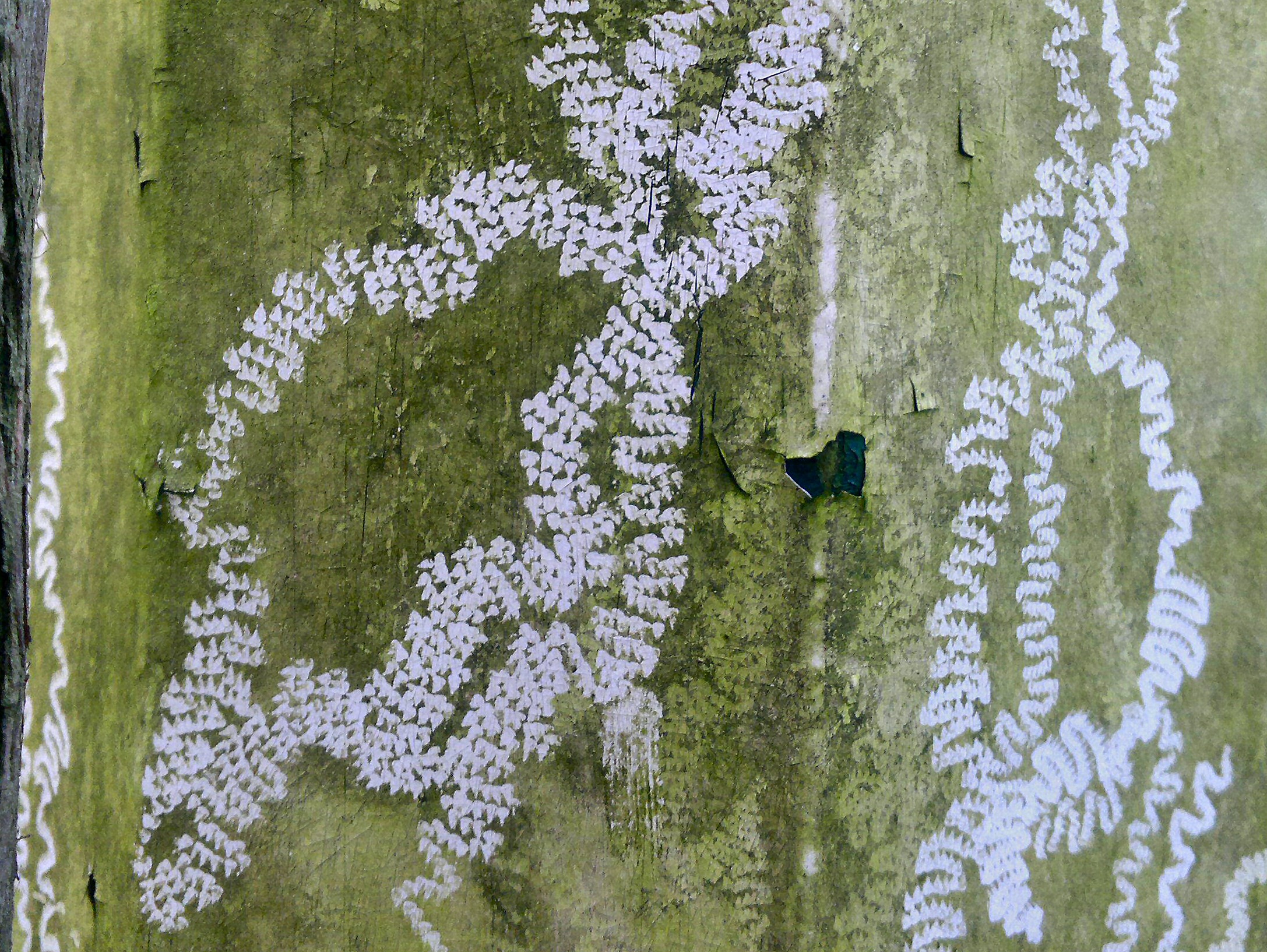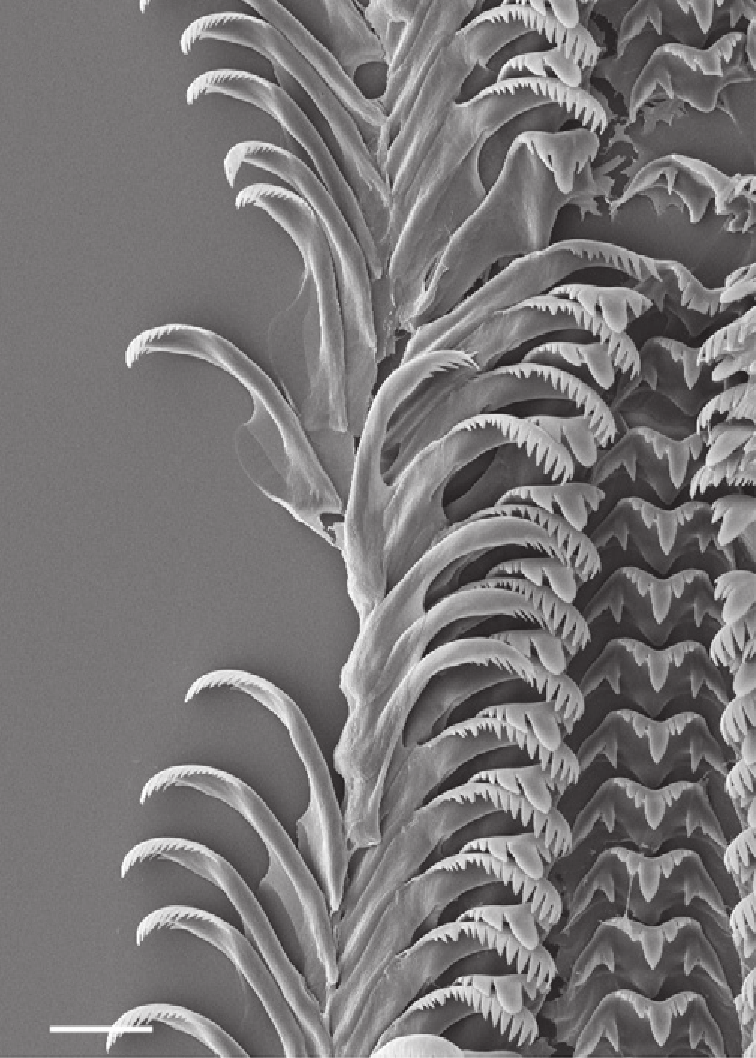|
Radulaceae
''Radula'' is a genus of liverwort, and is the only genus in family Radulaceae. It is a leafy liverwort. The appearance of the plants are as a scaly, green surface on the trunk of a tree, log or rock in a sheltered, moist out-door environment. The leaves are rounded, overlapping and consist of two unequal lobes. The smaller lobe is folded beneath the larger one. The oldest fossil species is ''Radula cretacea'' from the Cenomanian aged Burmese amber of Myanmar, belonging to the subgenus '' Odontoradula.'' Molecular evidence suggests that the genus arose during the Triassic, around 227.8 Ma, and the crown group began to diversify during the Early Jurassic, around 176.3 Ma. Species include: * '' Radula boninensis'' * '' Radula carringtonii'' J.B.Jack * '' Radula cavifolia'' * '' Radula complanata'' * '' Radula deflexilobula'' Promma, L.N.Zhang et R.L.Zhu * '' Radula demissa'' M.A.M.Renner, 2013 * '' Radula javanica'' * '' Radula jonesii'' Bouman, Dirkse & Yamada * '' Radula kojana ... [...More Info...] [...Related Items...] OR: [Wikipedia] [Google] [Baidu] |
Porellales
Porellales is an order of liverworts. Taxonomy * Jubulineae Müller 1909 ** Frullaniaceae Lorch 1914 *** '' Frullania'' Raddi 1818a 'Amphijubula'' Schuster 1970a; ''Schusterella">Amphijubula.html" ;"title="'Amphijubula">'Amphijubula'' Schuster 1970a; ''Schusterella'' Hattori, Sharp & Mizutani 1972; ''Steerea'' Hattori & Kamimura 1971; ''Mylia'' Leman 1825 non Gray 1821] ** Jubulaceae von Klinggräff 1858 *** ''Jubula (plant), Jubula'' Dumortier 1822 nom. cons. non Bates 1929 Salviatus.html"_;"title="'Salviatus">'Salviatus''_Gray_1821***_''Neohattoria.html" ;"title="Salviatus">'Salviatus'' Gray 1821">Salviatus.html" ;"title="'Salviatus">'Salviatus'' Gray 1821*** ''Neohattoria">Salviatus">'Salviatus'' Gray 1821">Salviatus.html" ;"title="'Salviatus">'Salviatus'' Gray 1821*** ''Neohattoria'' Kamimura 1962 [''Hattoria'' Kamimura 1961 non Schuster 1961] *** ''Nipponolejeunea'' Hattori 1944d ** Lejeuneaceae Cavers 1910 [Metzgeriopsaceae] *** Lejeuneoideae **** Brachiolejeuneeae *** ... [...More Info...] [...Related Items...] OR: [Wikipedia] [Google] [Baidu] |
Radula Visianica
''Radula visianica'' is a species of liverwort in the Radulaceae family. It is European Alps endemic Endemism is the state of a species being found in a single defined geographic location, such as an island, state, nation, country or other defined zone; organisms that are indigenous to a place are not endemic to it if they are also found elsew .... It was thought to be extinct since 1938 but was rediscovered in 2014 in Austria. References Porellales Flora of Europe Taxonomy articles created by Polbot {{Bryophyte-stub ... [...More Info...] [...Related Items...] OR: [Wikipedia] [Google] [Baidu] |
Burmese Amber
Burmese amber, also known as Burmite or Kachin amber, is amber from the Hukawng Valley in northern Myanmar. The amber is dated to around 100 million years ago, during the latest Albian to earliest Cenomanian ages of the mid-Cretaceous period. The amber is of significant palaeontological interest due to the diversity of flora and fauna contained as inclusions, particularly arthropods including insects and arachnids but also birds, lizards, snakes, frogs and fragmentary dinosaur remains. The amber has been known and commercially exploited since the first century AD, and has been known to science since the mid-nineteenth century. Research on the deposit has attracted controversy due to its alleged role in funding internal conflict in Myanmar and hazardous working conditions in the mines where it is collected. Geological context, depositional environment and age The amber is found within the Hukawng Basin, a large Cretaceous-Cenozoic sedimentary basin within northern Myanmar. The s ... [...More Info...] [...Related Items...] OR: [Wikipedia] [Google] [Baidu] |
Radula Jonesii
''Radula jonesii'' is a species of liverwort in the family Radulaceae. It is known from a few locations on Madeira and one location on Tenerife. The populations are small and vulnerable. This liverwort forms dark green to olive green mats on rocks or on trees such as ''Laurus novocanariensis'' and ''Ocotea foetens ''Ocotea foetens'', commonly called til or stinkwood is a species of tree in the family Lauraceae. It is evergreen and grows up to 40 m tall. It is a common constituent of the laurisilva forests of Madeira and the Canary Islands. Leaf fossils of ...''. It is part of the old growth laurel forest ecosystem on the islands. On Madeira this ecosystem is protected.''Radula jonesii''. Swedish University of Agricultural Sciences. Refe ...
|
Radula Deflexilobula
The radula (, ; plural radulae or radulas) is an anatomical structure used by molluscs for feeding, sometimes compared to a tongue. It is a minutely toothed, chitinous ribbon, which is typically used for scraping or cutting food before the food enters the esophagus. The radula is unique to the molluscs, and is found in every class of mollusc except the bivalves, which instead use cilia, waving filaments that bring minute organisms to the mouth. Within the gastropods, the radula is used in feeding by both herbivorous and carnivorous snails and slugs. The arrangement of teeth ( denticles) on the radular ribbon varies considerably from one group to another. In most of the more ancient lineages of gastropods, the radula is used to graze, by scraping diatoms and other microscopic algae off rock surfaces and other substrates. Predatory marine snails such as the Naticidae use the radula plus an acidic secretion to bore through the shell of other molluscs. Other predatory marine snails ... [...More Info...] [...Related Items...] OR: [Wikipedia] [Google] [Baidu] |
Radula Perrottetii
''Radula perrottetii'' is a species of plant in genus ''Radula'', a genus of liverworts. It is endemic in Japan. It contains the small molecule perrottetinene a cannabinoid Cannabinoids () are several structural classes of compounds found in the cannabis plant primarily and most animal organisms (although insects lack such receptors) or as synthetic compounds. The most notable cannabinoid is the phytocannabinoid tet ... and other metabolites of scientific interest including marchantin A. References Porellales Flora of Japan {{Bryophyte-stub ... [...More Info...] [...Related Items...] OR: [Wikipedia] [Google] [Baidu] |
Radula Obtusiloba
The radula (, ; plural radulae or radulas) is an anatomical structure used by molluscs for feeding, sometimes compared to a tongue. It is a minutely toothed, chitinous ribbon, which is typically used for scraping or cutting food before the food enters the esophagus. The radula is unique to the molluscs, and is found in every class of mollusc except the bivalves, which instead use cilia, waving filaments that bring minute organisms to the mouth. Within the gastropods, the radula is used in feeding by both herbivorous and carnivorous snails and slugs. The arrangement of teeth ( denticles) on the radular ribbon varies considerably from one group to another. In most of the more ancient lineages of gastropods, the radula is used to graze, by scraping diatoms and other microscopic algae off rock surfaces and other substrates. Predatory marine snails such as the Naticidae use the radula plus an acidic secretion to bore through the shell of other molluscs. Other predatory marine snails ... [...More Info...] [...Related Items...] OR: [Wikipedia] [Google] [Baidu] |
Radula Marginata
''Radula marginata'', or Wairuakohu, is a species of plant in the genus ''Radula'', a genus of liverworts. It is endemic to New Zealand. It has been found to contain cannabinoids. Cannabinoids Users smoking the plant have experienced different effects. The cannabinoid is not THC, the main psychoactive chemical in cannabis, but it is of similar molecular structure. The liverwort contains perrottetinene and perrottetinenic acid. The quantity of cannabinoid present is much less than in cannabis. Perrottetinene has been shown to be a moderately potent CB1 agonist leading to mild psychoactive effects in mice. Legal status The liverwort grows as a common weed. Owning, growing and distributing the liverwort is legal. ''Radula marginata'' may have been used in rongoā refers to the traditional Māori medicinal practices in New Zealand. Rongoā was one of the Māori cultural practices targeted by the Tohunga Suppression Act 1907, until lifted by the Maori Welfare Act 1962. I ... [...More Info...] [...Related Items...] OR: [Wikipedia] [Google] [Baidu] |
Radula Laxiramea
The radula (, ; plural radulae or radulas) is an anatomical structure used by molluscs for feeding, sometimes compared to a tongue. It is a minutely toothed, chitinous ribbon, which is typically used for scraping or cutting food before the food enters the esophagus. The radula is unique to the molluscs, and is found in every class of mollusc except the bivalves, which instead use cilia, waving filaments that bring minute organisms to the mouth. Within the gastropods, the radula is used in feeding by both herbivorous and carnivorous snails and slugs. The arrangement of teeth ( denticles) on the radular ribbon varies considerably from one group to another. In most of the more ancient lineages of gastropods, the radula is used to graze, by scraping diatoms and other microscopic algae off rock surfaces and other substrates. Predatory marine snails such as the Naticidae use the radula plus an acidic secretion to bore through the shell of other molluscs. Other predatory marine snails ... [...More Info...] [...Related Items...] OR: [Wikipedia] [Google] [Baidu] |
Radula Kojana
The radula (, ; plural radulae or radulas) is an anatomical structure used by molluscs for feeding, sometimes compared to a tongue. It is a minutely toothed, chitinous ribbon, which is typically used for scraping or cutting food before the food enters the esophagus. The radula is unique to the molluscs, and is found in every class of mollusc except the bivalves, which instead use cilia, waving filaments that bring minute organisms to the mouth. Within the gastropods, the radula is used in feeding by both herbivorous and carnivorous snails and slugs. The arrangement of teeth ( denticles) on the radular ribbon varies considerably from one group to another. In most of the more ancient lineages of gastropods, the radula is used to graze, by scraping diatoms and other microscopic algae off rock surfaces and other substrates. Predatory marine snails such as the Naticidae use the radula plus an acidic secretion to bore through the shell of other molluscs. Other predatory marine snails ... [...More Info...] [...Related Items...] OR: [Wikipedia] [Google] [Baidu] |
Radula Javanica
The radula (, ; plural radulae or radulas) is an anatomical structure used by molluscs for feeding, sometimes compared to a tongue. It is a minutely toothed, chitinous ribbon, which is typically used for scraping or cutting food before the food enters the esophagus. The radula is unique to the molluscs, and is found in every class of mollusc except the bivalves, which instead use cilia, waving filaments that bring minute organisms to the mouth. Within the gastropods, the radula is used in feeding by both herbivorous and carnivorous snails and slugs. The arrangement of teeth ( denticles) on the radular ribbon varies considerably from one group to another. In most of the more ancient lineages of gastropods, the radula is used to graze, by scraping diatoms and other microscopic algae off rock surfaces and other substrates. Predatory marine snails such as the Naticidae use the radula plus an acidic secretion to bore through the shell of other molluscs. Other predatory marine snails ... [...More Info...] [...Related Items...] OR: [Wikipedia] [Google] [Baidu] |
Radula Demissa
''Radula demissa'' is a species of liverwort. Distribution The species is found in Australia and New Zealand New Zealand ( mi, Aotearoa ) is an island country in the southwestern Pacific Ocean. It consists of two main landmasses—the North Island () and the South Island ()—and over 700 smaller islands. It is the sixth-largest island count ....Renner, M.A.M. ''et al''. 2013: Integrative taxonomy resolves the cryptic and pseudo-cryptic ''Radula buccinifera'' complex (Porellales, Jungermanniopsida), including two reinstated and five new species. ''PhytoKeys'', 27: 1-113. References Porellales Plants described in 2013 Terrestrial biota of New Zealand {{bryophyte-stub ... [...More Info...] [...Related Items...] OR: [Wikipedia] [Google] [Baidu] |





